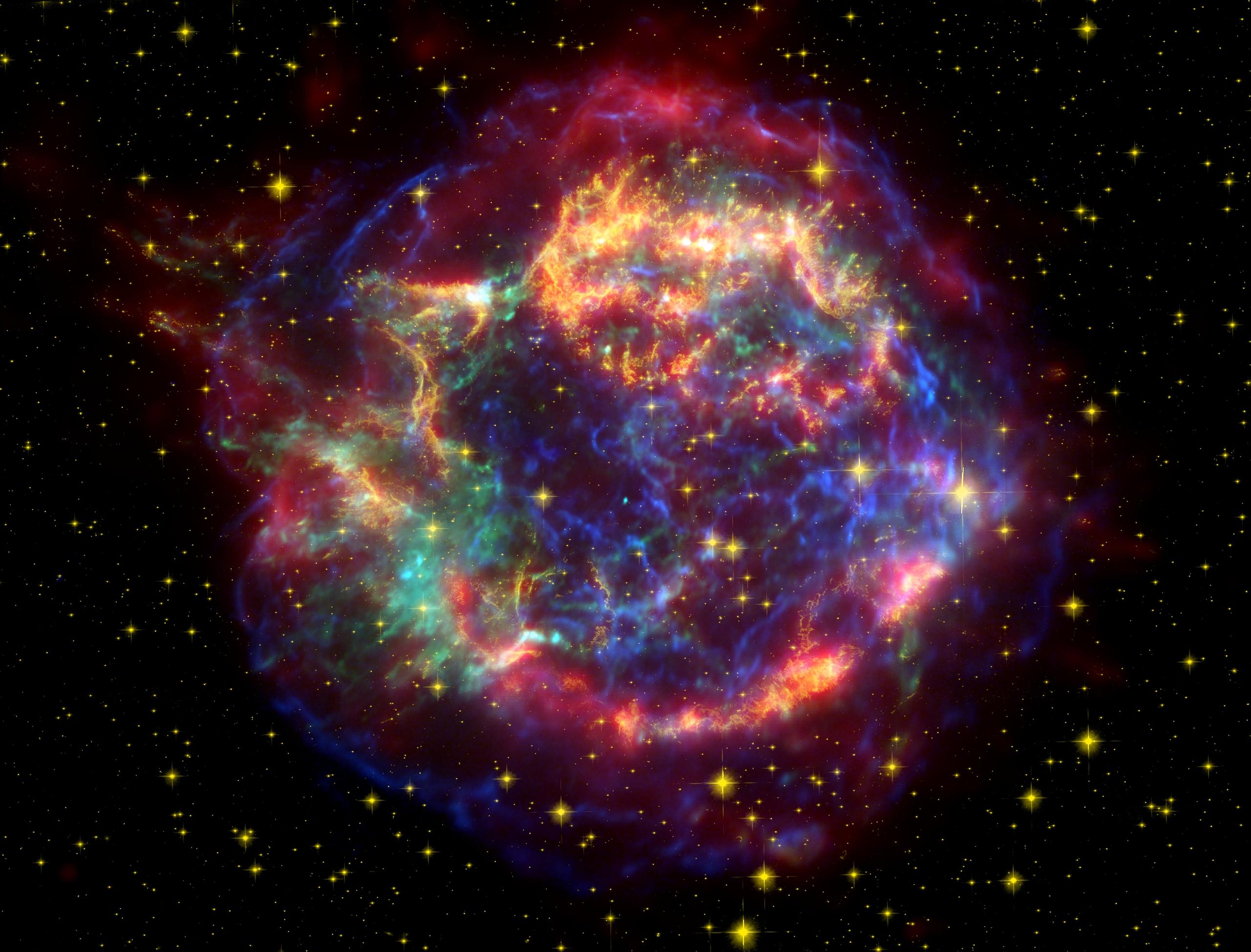Modeling Stripped-Envelope Supernovae with Physics-Driven Framework

Stripped-envelope supernovae (SESNe) are the explosive deaths of massive stars that have lost their outer hydrogen and sometimes helium layers. These events are key for studying the final stages of stellar evolution, binary interactions, and stellar wind effects of massive stars. However, their origins and explosion mechanisms remain uncertain. Jing Lu and her collaborators took part in tackling these challenges by studying the synthetic observables of a set of physics-driven explosions of massive stars that potentially lead to SESNe.
The study used radiative transfer simulations to model light curves and spectra of SESNe from massive Wolf-Rayet stars with ejecta masses of 4 to 11 solar masses. The results indicate that progenitors with higher ejecta masses produce broader light curves, consistent with some observed SESNe, but their peak luminosities are lower than expected. Methods commonly used to estimate ejecta mass based on radiative-powered light curves were shown to have uncertainties up to 160%, highlighting the need for self-consistent physics-based models. Additionally, the analysis found that helium lines are detectable even in models with very small helium masses, emphasizing the role of radiation field and ejecta composition in shaping spectral features.
This study provides a framework for better understanding SESNe and identifies areas for future improvement, including expanding progenitor model grids and enhancing the treatment of nuclear burning and mixing processes in the hydrodynamic simulations. This work provides a step forward for the direct linkage between the SESNe properties and their progenitor stars.
